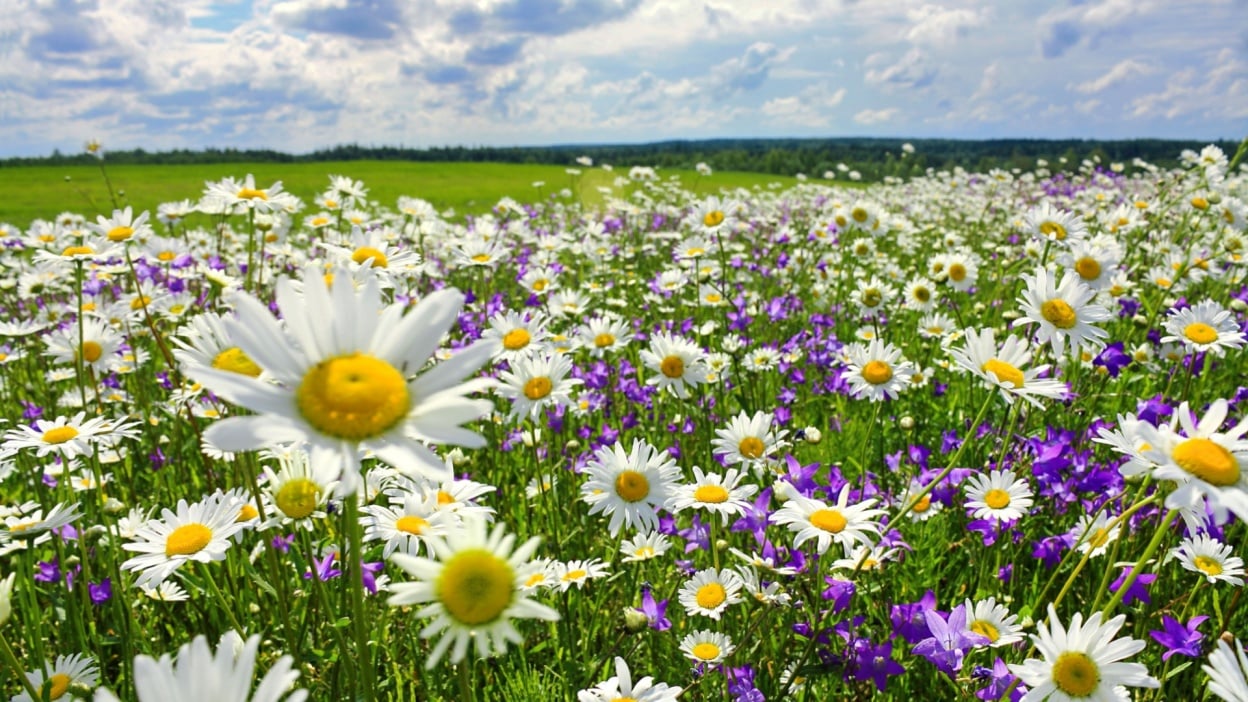
Instead of “No Mow May,” Try “Slow Mow Summer”
Mowing your lawn less often can be good for the environment, depending on how you do it.
Benefits
Lawns, mowed short, give us space for dogs and kids to play. They also keep our neighbors from making complaints to the town government or homeowneers’ association. But a closely cropped lawn is a flower free monoculture. Some organizations are encouraging a “No Mow May” to allow wildflowers in the grass to bloom – benefiting pollinators – before we start cutting grass down for the season.
There’s a huge caveat worth noting here: Ecological organizations say that No Mow May doesn’t do much for pollinators if all you do is let your grass grow for a month and then get back to your usual lawn care. (it can even be bad for your grass). Instead, consider how you can help pollinators in your yarrd with other approaches, like a “slow mow summer.”
What is No Mow May?
Originated by Plantlife in the UK, No Mow May is described as a movement that aims to “Provide a feast for pollinators, tackle pollution, reduce urban heat extremes, and lock away atmospheric carbon below ground.”
Plantlife asks people to pledge not to mow their lawn during May. They encourage participants to discuss plant diversity with their neighbors and on social media. Lawns have taken over areas that were once meadow. This leaves pollinators with fewer flowers to feed on. People should really be cultivating gardens and meadows, not just lawns. No Mow May is a step toward that.
Is it actually good to stop mowing your grass in May?
According to most U.S. based conservation organizations: no. The Xerces Society for Invertebrate Conservation writes “Let’s be honest, if all you are doing is letting dandelions and other weeds bloom, that’s not good quality pollinator habitat. Any benefits will be canceled if you power up your mower and restart as if nothing has changed once June arrives. We can’t pat ourselves on the back and say, “Yay, we saved the bees.”
Minimal environmental benefits aside, No Mow May can potentially harm your grass. Lawns are healthiest when you only trim off some of their height. You don’t want to let your grass get a foot tall and then chop it down to nothing.
What to do instead of No Mow May
Conservation organizations appreciate the sentiment of No Mow May, but prefer that we channel our energy into more holistic approaches like a Slow Mow Spring or Slow Mow Summer.
Suggestions
- Mow less often throughout the season
- PLant native and beneficial flowers in your lawn
- Grow a mini-meadow or wildflower garden
- Grow other pollinator-friendly plants





Leave a Reply